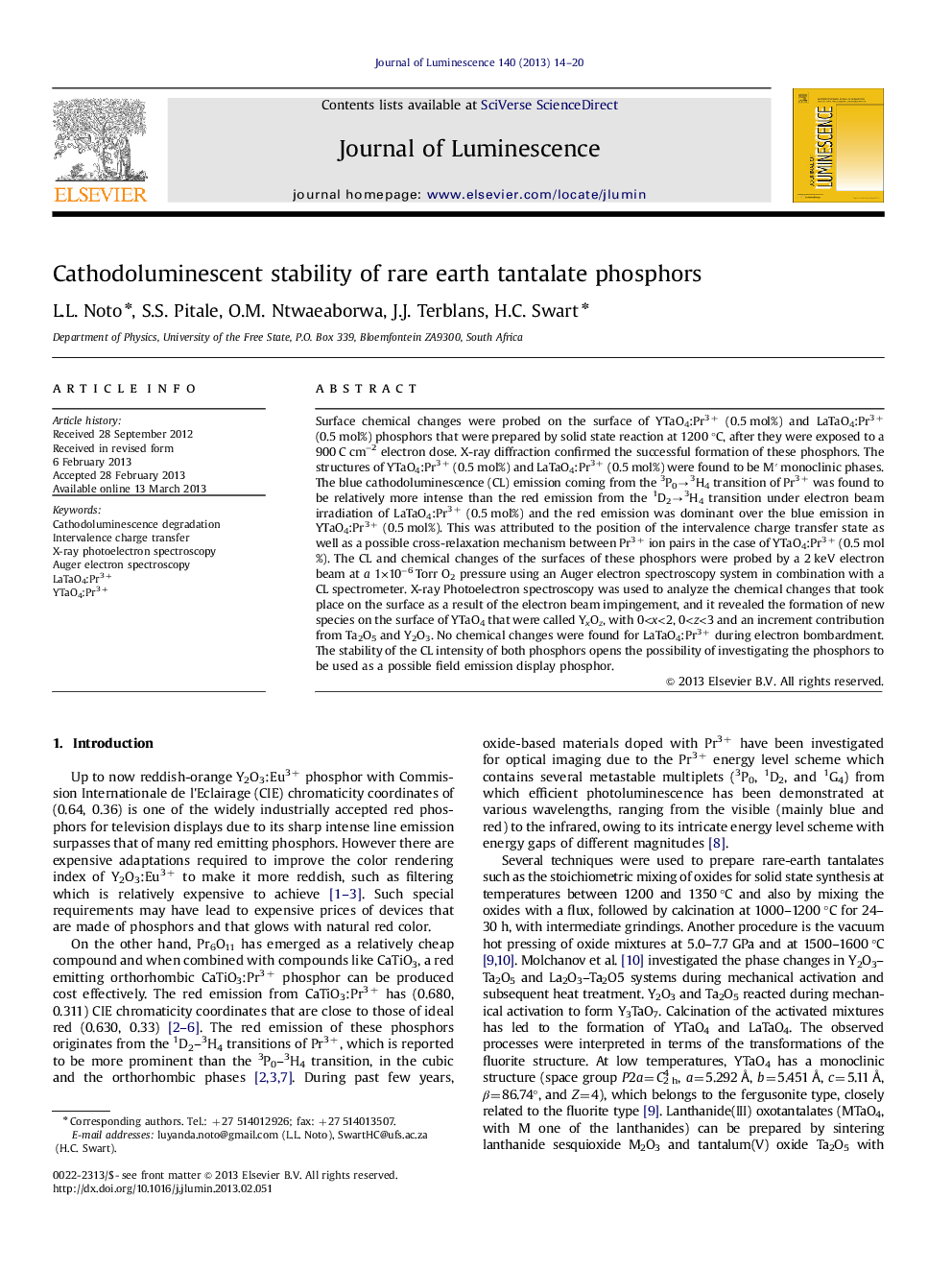| Article ID | Journal | Published Year | Pages | File Type |
|---|---|---|---|---|
| 5400388 | Journal of Luminescence | 2013 | 7 Pages |
Abstract
Surface chemical changes were probed on the surface of YTaO4:Pr3+ (0.5 mol%) and LaTaO4:Pr3+ (0.5 mol%) phosphors that were prepared by solid state reaction at 1200 °C, after they were exposed to a 900 C cmâ2 electron dose. X-ray diffraction confirmed the successful formation of these phosphors. The structures of YTaO4:Pr3+ (0.5 mol%) and LaTaO4:Pr3+ (0.5 mol%) were found to be Mâ² monoclinic phases. The blue cathodoluminescence (CL) emission coming from the 3P0â3H4 transition of Pr3+ was found to be relatively more intense than the red emission from the 1D2â3H4 transition under electron beam irradiation of LaTaO4:Pr3+ (0.5 mol%) and the red emission was dominant over the blue emission in YTaO4:Pr3+ (0.5 mol%). This was attributed to the position of the intervalence charge transfer state as well as a possible cross-relaxation mechanism between Pr3+ ion pairs in the case of YTaO4:Pr3+ (0.5 mol%). The CL and chemical changes of the surfaces of these phosphors were probed by a 2 keV electron beam at a 1Ã10â6 Torr O2 pressure using an Auger electron spectroscopy system in combination with a CL spectrometer. X-ray Photoelectron spectroscopy was used to analyze the chemical changes that took place on the surface as a result of the electron beam impingement, and it revealed the formation of new species on the surface of YTaO4 that were called YxOz, with 0
Keywords
Related Topics
Physical Sciences and Engineering
Chemistry
Physical and Theoretical Chemistry
Authors
L.L. Noto, S.S. Pitale, O.M. Ntwaeaborwa, J.J. Terblans, H.C. Swart,
